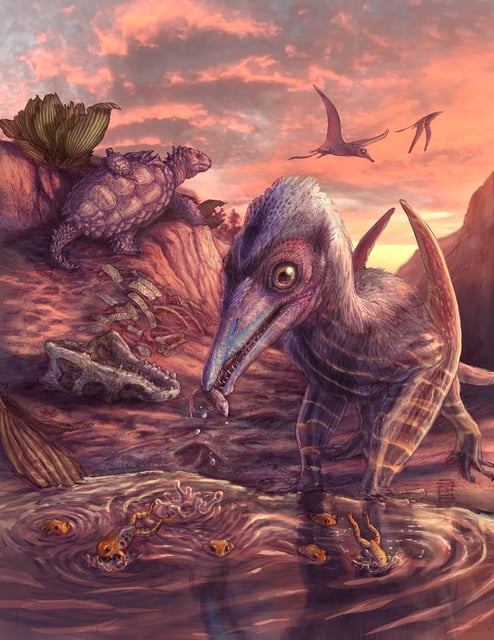Overview
- Researchers formally described Eotephradactylus mcintireae as a seagull-sized pterosaur dating to about 209 million years ago, making it the oldest known on the continent.
- Volcanic ash layers in the Owl Rock Member enabled high-precision dating of the bonebed to roughly 209 Ma.
- Over 1,200 fossils from at least 16 vertebrate groups were recovered, offering a window into a Late Triassic riverine ecosystem.
- Distinctive wear patterns on the pterosaur’s teeth reveal specialized feeding on armored fish and early niche differentiation.
- The site’s diverse assemblage, including spiked-shell turtle remains, helps narrow a 13-million-year pre-extinction gap and indicates rapid reptile dispersal across Pangaea.
